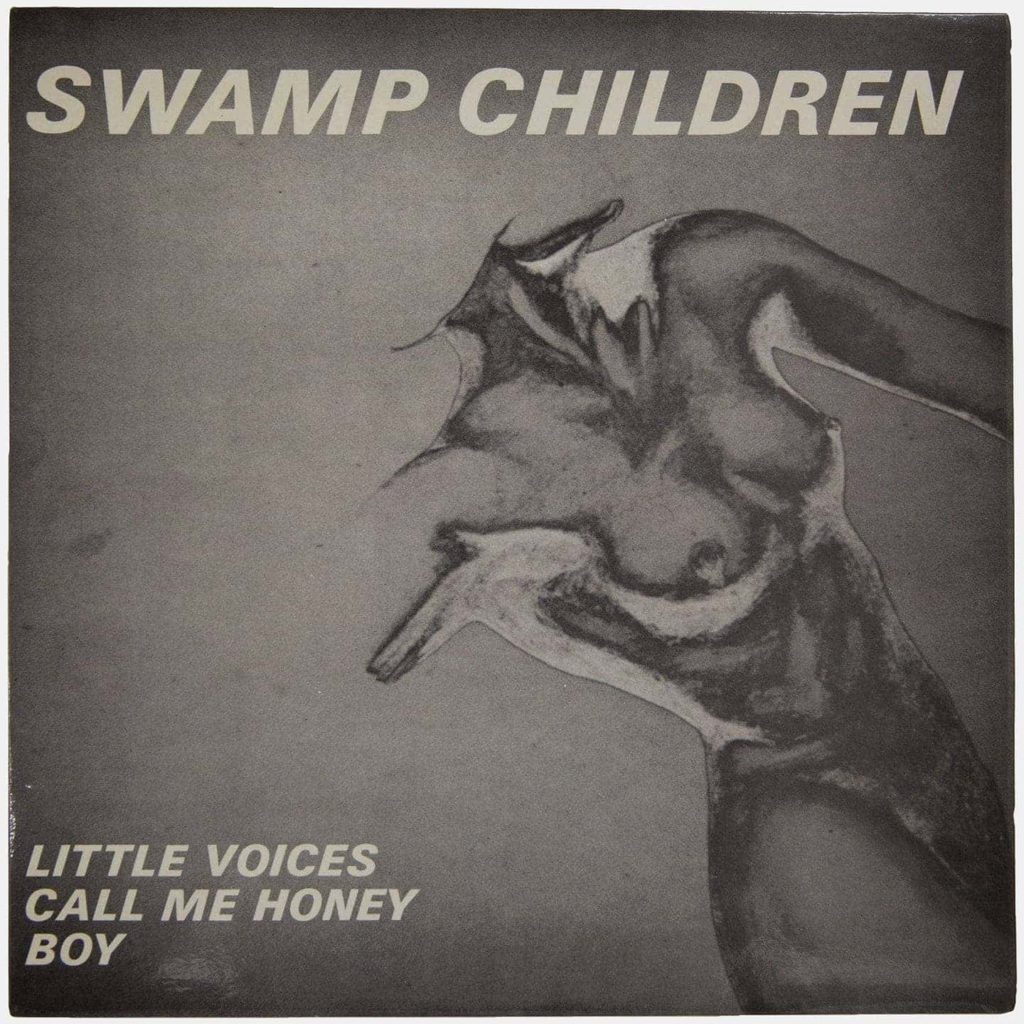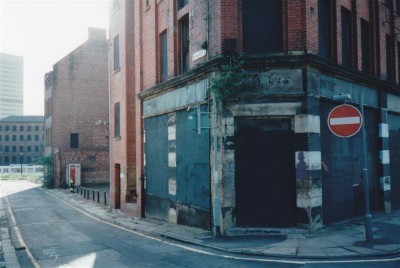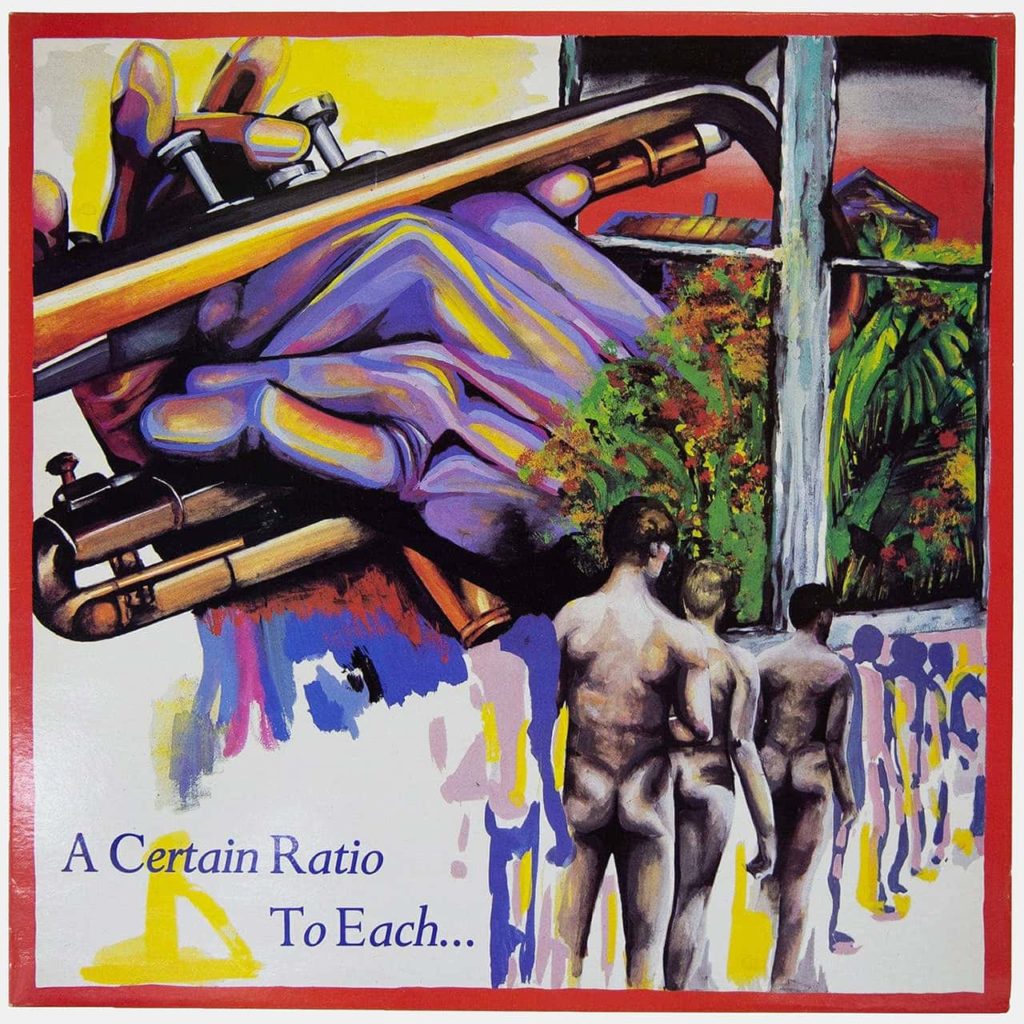Please note: Use Hearing Protection ended on 3 January 2022. To find out what exhibitions and activities are open today, visit our What’s On section.
The stories told in Use Hearing Protection centre on the first 50 artefacts in the Factory Records catalogue. 40 years ago, in October 1981, the label released a 12-inch EP that fuses punk sensibilities with free form jazz—FAC 49 Little Voices by Swamp Children.

For a label best known for its pioneering new wave electronica, before its move into the house-inflected Madchester sound, it might seem strange that jazz found a home at Factory Records. Particularly when you consider the quote attributed to Factory figurehead Tony Wilson: ‘When you go to a jazz club, you may notice that no one is enjoying themselves half as much as the people on stage. Jazz is like the theatre, it’s what you do when you can’t get a real gig.’
1970s Manchester had a well-established jazz scene, though, with Band on the Wall a focal point when it reopened under new management in 1975 and became the venue of choice for the Northern Jazz Centre Society. The venue grew out of a pub originally called The George & Dragon, and gained its Band on the Wall name from the installation of a small stage on the wall in 1937 by pub landlord Ernie Tyson. It was here that the house band used to play, to entertain the drinkers.
By the late 1970s, Band on the Wall had a less perilous stage and had become the weekly home for the Manchester Musicians’ Collective. The collective included three bands who released music on Factory Records: Joy Division, A Certain Ratio and Crispy Ambulance. Martin Moscrop was a member of A Certain Ratio and Swamp Children. He recalls that membership of the collective was decided at a monthly meeting, and whichever bands were ‘in’ were given twice monthly gigs. Running order for the gigs was decided each Monday at the weekly meeting.

It was at a Manchester Musicians’ Collective gig at Band on the Wall that Rob Gretton saw A Certain Ratio play, bringing them to Tony Wilson’s attention. Not long after, Wilson began managing the band.
Moscrop played drums with Swamp Children, a band that formed in Manchester in 1980. The singer, Ann Quigley, is one of the five women featured in the exhibition as a counterpoint to the five male partners. Ann and her boyfriend John Kirkham, the guitarist in Swamp Children, had become friends with A Certain Ratio in 1979. John had also auditioned for the artist Linder’s band Ludus, another jazz-inflected Manchester outfit who contributed the track ‘Red Dress’ to the soundtrack for FAC 9 The Factory Flick. Ann, John and Martin were joined by Tony Quigley (saxophone and bass), Ceri Evans (keyboards and bass) and Cliff Saffer (saxophone), and the band shared rehearsal space with Joy Division and A Certain Ratio. John and Martin were the only band members with any real musical experience, which is where the punk spirit of not needing to be accomplished infuses the music.
After six months of rehearsals, Swamp Children made their live debut in June 1980, at The Beach Club at Oozit’s on Newgate Street in the Shudehill area of Manchester. This was the venue that, a year later, would see the first live performance of New Order. The building is long gone, knocked down to make way for the Metrolink interchange.

The members of Joy Division were good friends with Stephen Mallinder and Richard H Kirk of Sheffield band Cabaret Voltaire, thanks to the Cabs sharing the bill at an early Factory night at the Russell Club with Joy Division and the Tiller Boys, and recording tracks for FAC 2 A Factory Sample alongside Joy Division. Mallinder and Kirk owned their own recording studio in Sheffield, and it was here that Swamp Children recorded the title track for their debut EP. Ann Quigley recalls: ‘We recorded Little Voices in March 1981 … I remember it was cold in the studio, Western Works.’ The track is 8 and a half minutes of free form jazz inspired by Miles Davis fused with Latin beats and heavy funk, and was produced by Mallinder and A Certain Ratio singer Simon Topping. Topping also produced the other tracks on the EP, ‘Boy’ and ‘Call Me Honey’, which the band recorded in June 1981 at a studio called Hologram in Stockport.
Collaboration between Swamp Children and A Certain Ratio wasn’t limited to the music. As an art school graduate, Ann created the sleeve art for Swamp Children releases. She recalls: ‘I had done a few sleeves for the Swamp Children, and Simon from A Certain Ratio asked me to do a painting for Flight. He told me what he wanted, I interpreted it, the band were pleased, this led to the cover of To Each… It was a strange painting, the hand and trumpet were inspired by Miles Davis.’

Ann has happy memories of this period in her life: ‘It was such a creative golden age in music, fashion, art in Manchester. Right at the start of Factory, no one knew what the future held, but for a brief moment we could fly.’